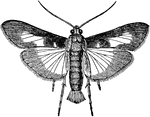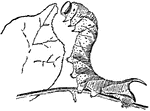
Satellite Sphinx Moth
"Philampelus satellitia, a large and handsome hawk-moth whose larva feeds upon the vine. Natural size.…
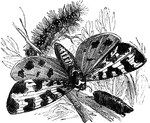
Tiger Moth
The garden tiger moth (Arctia caja) is named for the different and colorful patterns on its wings.
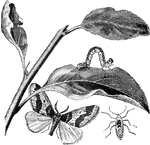
Male, Female, and Larva of the Mottled Umber Moth
Mottled umber moth is the common name of hybernia defoliaria. The moths emerge between October and March.…

Myriapoda
"1 and 1, Egg and Larva of Iulus; 2, and 2, Iulus; 3, Polydesmus; 4, Glomeris; 5, Geophilus; 6, Lithobius;…

Larva and Chrysalis of the Onion Fly
The larva of the onion fly are maggots or footless grubs. Many live in the interior of roots, stems,…
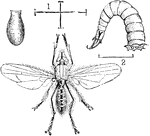
Onion Fly, Larva, and Pupa
Onion flies are similar to common houseflies in appearance. The larva burrow into onions and eat near…

Orange Dog
The Orange Dog, caterpillar of Papilio creshontes, with osmateria, or scent organs, extended.

Peanut Worm - Interior Anatomy of Larva
Sipunculus nudus. A species of unsegmented marine worm, commonly called the peanut worm. "B, Larval…
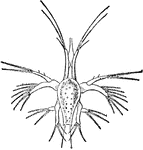
Nauplius of a Prawn
A nauplius (plural nauplii) is the first larva of animals classified as crustaceans (subphylum of Arthropoda).…
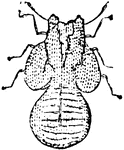
Larva of Psylla Pyrisuga
The larva of psylla pyrisuga live on pear trees and sometimes apple trees. The larvae suck the juice…
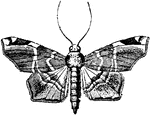
Pyralidina
"The Pyralidina are a group of small moths readily distinguished by their long slender bodies and large…
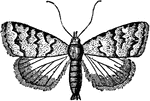
Pyralidina
"The Pyralidina are a group of small moths readily distinguished by their long slender bodies and large…
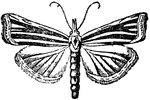
Pyralidina
"The Pyralidina are a group of small moths readily distinguished by their long slender bodies and large…

Pyralidina
"The Pyralidina are a group of small moths readily distinguished by their long slender bodies and large…
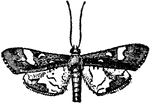
Pyralidina
"The Pyralidina are a group of small moths readily distinguished by their long slender bodies and large…

Larvae of Rose Sawfly
A parasite which feeds as larvae in rose-twigs or upon the leaves. Some species are confined to roses…
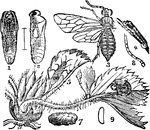
Strawberry Sawfly
"Strawberry False-worm (Emphytus maculatus). 1, 2 pupa, ventral and lateral views (line shows natural…
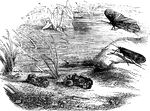
Great Red Sedge and Larva
"The Phrygania striata is over an inch long, of a fawn-color, with the exception of the eyes,…
Larva of a Small Cabbage Butterfly
Generally, larva of the butterfly resembles a worm. Larva do not resemble the mature insect.
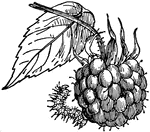
Raspberry Spanworm
The Raspberry Spanworm (Synchlora aerata) is the larva of a species of Geometer moth.

Tortricina
"The Tortricina include a great number of small moths exceedingly injurious to orchard and other trees.…
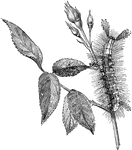
Larva of Vapourer Moth
Vapourer moth is the common name of orgyia antiqua. The larva is covered with yellowish hairs. The larva…

Parasite Wasp Larva
The larva of Sigalphus curculionis, a species of parasitoid wasps. These insects use other insects as…
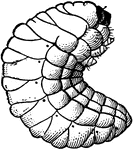
Pea Weevil
"The pea weevil is often found in peas in its larval state during summer and autumn, as a pupa in winter,…
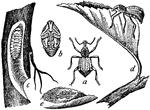
Apple Root Weevil
"Root-weevil (Leptops hopei). a, weevil; b, pupa; c, larva, in situ; d, weevil ovipositing on leaf above;…

Yellow Bear Stages
"Spilosoma virginica: a, female moth; b, full-grown larva; c, light form of larva, not quite mature;…
